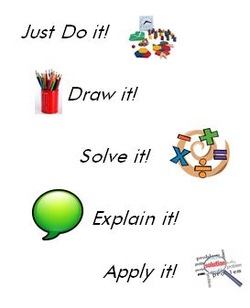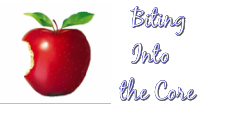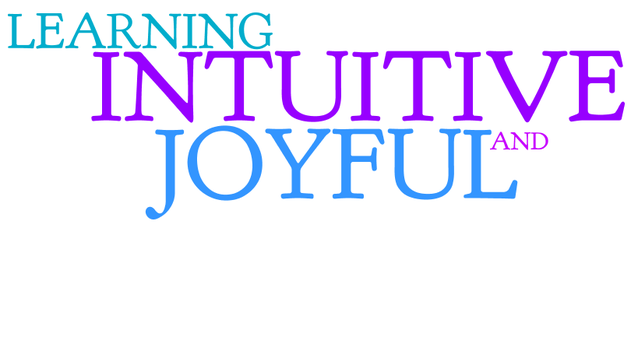Sample the Core

It is important to allow yourself time to explore this new way of teaching and learning. As always, new journeys are best undertaken with a friend so invite a colleague to try out a lesson or two with you. You can share in the planning and reflect on the learning -- both student and teacher learning -- together!

As you're planning, keep in mind this idea that Dr. Linda Kaminski shared with me. In Common Core Mathematics students students need to
"Do it! Draw it! Solve it!
Explain it! Apply it!
10 Steps to Designing a Common Core Math Lesson
- Study the Standards for Mathematical Practice. Choose 1 or 2 which you would like to have as your focus for the next few months or even the next school year. In my classroom, I selected SMP #3 "Construct viable arguments and critique the reasoning of others" and SMP #4 "Model with mathematics." Check out the links for each SMP which describe what this looks like for students at your grade level. You may also want to reference the Jordan School District posters which show a visual representation of the SMP at different grade levels.
- Select a math standard you want to teach.
- Find the standard in the Common Core Standards (even if it is listed at a different grade level than the one you are currently teaching). Be sure to read the cluster heading which provides context for this specific standard.
- Read the standard in the Unpacked Standards and study closely the examples they have provided for how students might think about this problem. If you're hungry for more, check out the Common Core Math Progressions for how the learning in this domain develops over time.
- Search LearnZillion.com on their Common Core Navigation Page to see if any lessons have been written for this standard. Once you click on a Grade level and Domain, it will zoom in to a page which lists each standard individually. If you see a file icon next to the standard, there is lesson set for that standard. If you click on the file icon, you will see all the lessons built to address that standard. What is awesome about this is that you can see how outstanding teachers from around the nation have "unpacked" the standard into a series of lessons. LearnZillion has a video tutorial for how to use the navigator. Create a free accouunt and go to "how to find a lesson."
- Now you're ready to select learning tasks which will allow students to construct a deep understanding of the topic. The key to this is allowing them time to explore. Often, this will mean a much longer unit than you taught previously. Not to worry, however, because the Common Core Standards have been designed to allow you time for student exploration and construct development. Georgia has written outstanding units for grades K-8 which include scaffolding tasks, constructing tasks, practice tasks, and performance tasks. In addition, they have identified the key mathematics for each unit, key vocabulary, enduring understandings, and key questions. I suggest skimming the whole unit before you select learning tasks. To find the unit which has the standard you are working on, click on the grade level and then on the "curriculum map." From there, you can see which units include your focus standard.
- Choose 1 or 2 tasks from the Georgia Units or from another source to try with your students. Plan out the key questions you want students to be able to answer as they work on the tasks.
- Watch the LearnZillion videos to see where they might best be used to build understanding. I have used them to review past material, to provide a visual introduction to a new topic, to present the new content, or to reinforce the content I have already taught. With a free teacher account, you can download the PowerPoints for free and present them yourself if you prefer that to the video. There is also a Coach's Commentary in which the teacher who wrote the unit explains the reasoning and background behind their instructional decisions.
- Once you're ready to start your lesson, set yourself up for success by reviewing norms and expectations with your students. For many of our students, using manipulatives and having rich conversations about math is a new experience and they need a lot of guidance about what that looks like and sounds like in the classroom.
- Relax and enjoy the learning! It won't necessarily look or feel comfortable at first, but give it time. I have found that students enjoy learning this way and that the "ah-ha moments" are worth all the work!
| do_it_draw_it_solve_it_explain_it_apply_it_poster.pdf | |
| File Size: | 127 kb |
| File Type: | |



